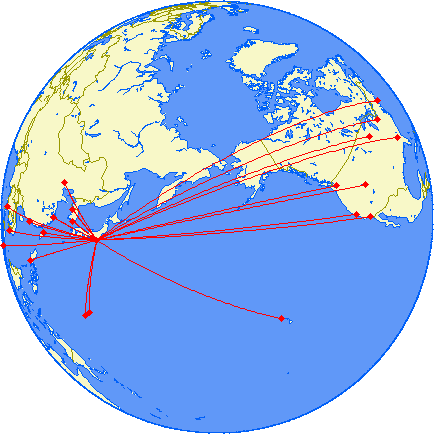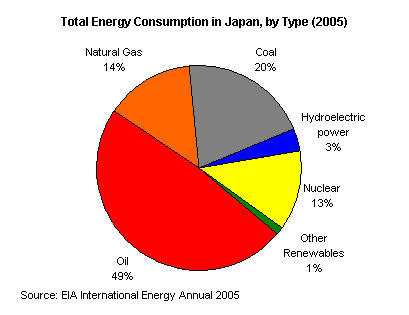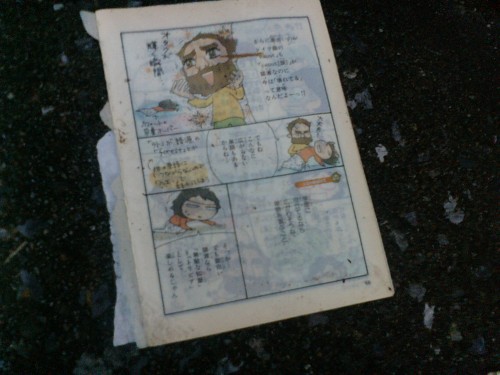Note: I started drafting this post about a week ago. Many of these points have since been raised in our educated readers’ comments to Curzon’s earlier post on the Savoie case. I’m going to re-raise them anyway, since I believe the broader discussion of international divorce should continue.
My first trip to court was as a student in an undergraduate law class. I was assigned to sit in a session of the local courthouse and take notes on what happened. This was also where I saw a divorce for the first time. A middle-aged, heavyset black couple with soft Southern drawls came in. The entirety of the divorce went like this:
JUDGE: I understand you two want to get divorced.
WIFE: That’s right, Your Honor.
JUDGE: What is the reason for this?
WIFE: He cheated on me, and lied to me. And we don’t wanna be married no more.
JUDGE: Is this true, sir?
HUSBAND: Yes, it is.
JUDGE: Do you have any children?
WIFE: No, sir.
JUDGE: Property?
HUSBAND: It’s taken care of.
JUDGE: Fine. I declare you lawfully divorced. Take this form to the clerk.
WIFE: Thank you.
I left the courthouse shortly after that, and saw them getting into the same car together to drive home. It was a surprisingly cute divorce.
Since becoming a lawyer and moving to Tokyo, I have gotten an inside seat in some much nastier divorces. Although the law firm I used to work at was primarily dealing with corporate clients, we would regularly get a personal inquiry from, say, a client’s secretary, telling us her brother’s children were stolen by his crazy Japanese wife, and we would invariably try to respond with something productive even though there was nothing particularly productive to do at that point. The problems in resolving cross-border family disputes involving Japan are legion, and have inspired a voluminous website written by an anonymous estranged gaijin dad.
First, some facts
The statistics in this section all come from the Japanese government. You can see the original stats (in Japanese CSV format) here.
One important but rarely-cited fact about Japanese divorce law is that most divorces are consensual and involve little legal process at all. These so-called “kyogi rikon” have consistently accounted for 90 to 95 percent of all divorces during the postwar era.

A lot of this has to do with the ease of the consensual divorce. The two parties simply sign and seal a one-page form (here’s a sample in Japanese) and file it with city hall. It’s possible to get a consensual divorce without ever setting foot in court. But there has to be consensus on what to do with property and children. In this respect, the system makes it comparatively very easy to end a marriage so long as there are no particular disputes to resolve.
If the parties can’t agree to the terms of their divorce, they must go to family court. The first phase is “chotei rikon,” essentially a mediated divorce under the auspices of the family court system. It is supervised by a judge but the mediation is conducted by laypeople. If mediation fails, the family court judge can step in with a “shimpan rikon,” a sort of preliminary judgment, but this can be defeated by either party’s objection within two weeks, and so it does not form a statistically significant number of divorces. The last resort is a “hanketsu rikon,” which is also finalized by the family court judge, but can only be concluded upon a showing of particular legal facts such as infidelity, cruelty or unwarranted denial of sexual intercourse. The parties can reach a settlement during the final court process, in which case their agreement is called a “wakai rikon”; this system was introduced in the past decade and has become a not-uncommon way to resolve marital disputes.
It’s a common misconception that mothers always get custody after a Japanese divorce. In reality, fathers end up with custody in a significant percentage of cases. In fact, until the 60’s, they were more likely to get custody than mothers. Check out this graph.

The thing is that (as stated above) most divorces are reached by voluntary agreement of some kind. Once the case gets into family court, the more-or-less official presumption is that the mother is a more suitable custodian unless the father can prove otherwise. The pre-eminent English academic commentator on Japanese child abduction, Doshisha law professor and periodic Japan Times contributor Colin P.A. Jones (who incidentally lost his own kid in a Japanese divorce proceeding) translated the family court’s mediation manual as follows:
When a child is small, it is thought that the mother should generally be designated custodian. For a young child, the mother’s existence is irreplaceable, and in mediation, custody designations should usually proceed from this basis. [. . .]
When a father is demanding to be designated custodian, it is not uncommon for him to base his arguments on the fact that because he has to work outside the home, his own parents can look after the child. However, it can be said that it is better for the child to live with his mother than with his grandparents. Unless the conditions in which a mother lives are judged unsuitable for the child, as a general rule I cannot approve of awarding sole custody to fathers. Even if grandparents do look after the child, it is likely that matters will arise daily in which they will not pay the same level of attention as a parent.
This manual does not have the force of law; it is merely an official reference for the judges. The practical effect of it is that fathers can only win custody by an overwhelming display of evidence that the mother is unfit to be a parent.
(Aside: Our favorite Japanese prime minister, Junichiro Koizumi, kept his first two children in a consensual divorce in 1982. His wife was six months pregnant at the time the papers were finalized and gave birth after the divorce. Koizumi tried to claim this third child as well, but the matter ended up in family court mediation and Koizumi’s ex-wife retained custody. Japanese Wikipedia interestingly doesn’t even name the third child of Koizumi, apparently because he is no longer legally Koizumi’s.)
What about joint custody? There is generally no such thing as joint custody among Japanese nationals. Visitation rights (面接交渉権 mensetsu kosho ken) may be granted by the court, but are often very limited (sometimes to a few hours once per year), are very difficult to legally enforce, and one parent must still be designated as the custodian whether or not the divorce is consensual. The only way a Japanese child can be registered as being in joint custody is if the child has another citizenship and their parents’ divorce was finalized in another country which allows joint custody. (This is not a “legal” provision per se; it was allowed by a Ministry of Justice circular and could theoretically be changed overnight if the Justice Minister changed their mind about the issue.)
Even outside Japan, joint custody is a sticky subject among parents, academics and jurists. Terrie Lloyd made the following statement in his email newsletter earlier this week:
The view of most [Japanese] judges (based on interviews with judges that we have done in the past) is that kids need to be insulated from the hurt between divorcing parents by giving them just one care-giver. But this is a traditional view and has no basis in fact. Child psychologists outside Japan generally agree that kids need the love and attention of both parents, even if they are divorced. Splitting the kids from one parent naturally causes them to side with the other (Parental Alienation Syndrome: PAS), which causes them to have complexes about the missing parent later in life.
Actually, as a glance at Wikipedia would show (and as Professor Jones acknowledges in the article linked above), PAS has not nearly reached general acceptance in the psychological community or the legal community, even in the supposedly more liberal United States.
(Another aside, at the risk of pissing off all the divorced men in the room: I find the use of PAS theory in custody disputes difficult to swallow. Sure, in theory it’s better for kids to have contact with both parents and view both parents as respectable people. In practice, if the parents can’t hold their marriage together, they probably can’t refrain from filling their kids’ heads with crazy talk about each other. So how is bouncing the kids back and forth between homes, and introducing two conflicting stories between the parents in the process, less traumatic for the kids than having one consistent story?
That said, there is a risk of conflating issues here. It’s one thing to park the children in one parent’s household when there is abuse or domestic violence going on. It may also be a good idea when the two parents absolutely can’t get along and their own discord is harming their children. But there are also many cases where children have no idea what is going on between their parents–only that one parent is going away forever–and this boggles my mind. In those sorts of cases, it makes sense to allow ongoing shared custody as an option, so long as the parents can work out logistics between them and agree to keep their disputes between themselves.)
This brings us to the international aspect of Japanese divorce law. International divorces are common in Japan, but not exactly in the form familiar to readers of Debito.org or crnjapan.com. 7.1% of divorces in Japan in 2007 involved a non-Japanese party. The most common combinations were:
* Japanese husband, Chinese wife (1.97%)
* Japanese husband, Filipina wife (1.82%)
* Japanese husband, Korean wife (1.11%)
* Japanese wife, Korean husband (0.35%)
* Japanese husband, Thai wife (0.33%)
* Japanese wife, Chinese husband (0.22%)
* Japanese wife, American husband (0.14%)
Chinese and Korean family law bear a striking resemblance to Japanese family law. The Chinese and Korean systems emerged from the civil law tradition, and like Japan’s, revolve around the concept of a central family registration system where every citizen is tracked. So that means only 2.74% of Japanese divorces involve a country with a “truly foreign” family law apparatus, and it’s probably safe to say that of the total number of divorces in Japan, much less than one percent involve a non-Asian party. These facts are understandable given that Japanese-Asian marriages form the vast majority of international marriages in Japan.
Let’s ask the question on everyone’s mind, though:
Is the system biased against foreigners?
Yes, it is.
But to some extent, the bias is unavoidable.
Unfortunately, there are no statistics to show how foreign parents generally fare in court-administered divorces here. My conclusion, based on many stories floating around the internet and by word of mouth, is that foreign parents are highly unlikely to win custody of Japanese kids from a Japanese court, whether or not the foreign parent is male or female. And given the fact that moms are more likely than dads to keep the kids, foreign dads should not expect much if their marriage falls apart.
A lot of this boils down to cultural differences. A Japanese judge likely has no idea of how a non-Japanese family operates, and is going to have suspicion regarding what might happen in a non-Japanese household. Suspicions aside, a not-so-worldly Japanese person would probably be unpleasantly surprised by many family quirks that are taken for granted outside Japan.
The same is true for courts in other countries. Chris Savoie, for instance, attacked Noriko Savoie in Tennessee divorce court because she had their 6- and 8-year-old kids sleep with her in her bed. This practice is uncommon in the US and would probably seem strange to an American lawyer or judge, but wouldn’t raise an eyebrow in Japan, where it’s often used simply to save space.
Cultural issues aside, there are also some procedural stumbling blocks for non-Japanese in the Japanese divorce system. These are issues which warrant legal revision, both from an international human rights perspective and from a perspective of citizens’ best interests.
Problem 1: There is no contempt of court
This is really an endemic problem throughout the Japanese legal system, not just in the sphere of family court. Even if you can get a judge to order some action or inaction (like “stay away from X’s kids” or “let X see the kids on these days”), they have no way to enforce that order if the counterparty says “no.” All they can do is levy fines, but even if they do that, the counterparty can simply refuse to pay.
Then your only option is “self-enforcement” — withholding payments and finding ways to exert social pressure. Self-enforcement might work to some extent if the enforcing party is savvy about the local system, but it puts outsiders, particularly outsiders in different countries, at a great disadvantage. Courts need teeth if they are to effectively administer any sort of custody-related arrangements.
Problem 2: The arbitrariness of Japanese nationality and conflict-of-law rules
The biggest legal problem in the Savoie case is that Dr. Savoie is a Japanese citizen and apparently hasn’t taken that fact into account in his legal strategy. The following statutory passages explain what I mean:
法の適用に関する通則法
General Act Regarding the Application of Laws(本国法)
第三十八条 当事者が二以上の国籍を有する場合には、その国籍を有する国のうちに当事者が常居所を有する国があるときはその国の法を、その国籍を有する国のうちに当事者が常居所を有する国がないときは当事者に最も密接な関係がある国の法を当事者の本国法とする。ただし、その国籍のうちのいずれかが日本の国籍であるときは、日本法を当事者の本国法とする。(Home Country Law)
Article 38. If a party has two or more nationalities, then the home country of the party shall be the law of the country in which such party has a habitual residence if such a country exists, and should no such country exist, the law of the country having the closest relationship to that party. However, if any such nationality is the nationality of Japan, the home country law of the party shall be the law of Japan.
According to the International Wedding Association, a Japanese NPO, a citizen would have “habitual residence” by virtue of being recorded in the resident registration (juminhyo) system, unless they have actually lived overseas for five continuous years prior to the date of determination.
(婚姻の効力)
第二十五条 婚姻の効力は、夫婦の本国法が同一であるときはその法により、その法がない場合において夫婦の常居所地法が同一であるときはその法により、そのいずれの法もないときは夫婦に最も密接な関係がある地の法による。(Validity of Marriage)
Article 25. The validity of a marriage shall be determined by the home country law of the husband and wife if such law is the same; or if such law does not exist, by the law of the habitual residence of the husband and wife if such law is the same; or if such law does not exist, by the law of the place having the closest relationship to the husband and wife.(離婚)
第二十七条 第二十五条の規定は、離婚について準用する。ただし、夫婦の一方が日本に常居所を有する日本人であるときは、離婚は、日本法による。(Divorce)
Article 27. The provisions of Article 25 shall apply to divorces. However, if either husband or wife is a Japanese person with a habitual residence in Japan, [their] divorce shall be based on Japanese law.
So let’s run down the facts.
- First, Christopher and Noriko were married in Japan.
- Then Christopher became a Japanese citizen. So far, so good.
- Then Christopher took his wife to the US and divorced her there. But their mutual home country law was Japanese law, so their divorce would have been invalid under Japanese law.
- Having been improperly divorced for Japanese purposes, Christopher then married Amy.
Whether or not we agree with the propriety of a U.S. divorce for the Savoies, turning Chris into a bigamist is a pretty illogical outcome. I think he could get around prosecution given that he had no apparent intent to be legally married to two people at the same time.
That said, I think Christopher may intend to rescind, or deny the validity of, his own naturalization. The US Consulate says they want to help him out, which should not be the case if he really is Japanese (you can’t get consular protection in a country where you are a citizen). It’s a bizarre argument, and I believe it would fall flat on its face in court as an “abuse of rights” or something similar.
The solution to this problem, inasmuch as there is one, is to revise these conflict-of-law provisions so that Japanese citizens have the clear ability to divorce in a foreign forum under foreign law if they have some requisite connections to that forum. (Formally allowing dual citizenship, and getting rid of the odd ability to rescind one’s own citizenship following naturalization, wouldn’t hurt, either.) But both of these ideas are in conflict with another feature of the Japanese family law system.
Problem 3: The koseki is a moronic concept
If you don’t know what the “koseki” is, read this. The entire family law system in Japan is based on the premise of a giant hierarchical registry limited to citizens.
The koseki-worship in the civil law system here is responsible for a lot of the family law rules. Children legally exist as an entry in their parents’ koseki page. Parents have a koseki page by virtue of being married. When they divorce, they revert to separate koseki pages, and their children must go one way or the other. Thus, in a sense, they legally lose title to their children. And, as many of our readers undoubtedly know, foreigners do not appear on the koseki at all, except as “notes” on their spouse’s page.
Why is this entire system necessary? Familial relations are a personal matter, and are often quite abstract in nature. Is a parent less of a parent because they remarried or because they don’t have a Japanese passport?
The notion of organizing society around households is unnecessarily feudalistic for the modern age, and something more flexible would be better for citizens and non-citizens alike — particularly those for whom familial roots have historically been a source of discrimination (the burakumin, naturalized Koreans and others).
Personal footnote
I don’t have a wife or kids yet. Debito, who has written extensively about his own divorce and loss of children (a dreadfully sad story, but an excellent overview of how the system works here), chided me in a Facebook comment thread for daring to state my opinions while I lack skin in the game. Lest anyone get the wrong idea, I respect Debito, who gave me, Roy and Curzon the privilege of hearing his story in person a good year before he made it public. But where I come from, having no skin in the game is called “objectivity,” and does not by any means disqualify an opinion.
For what it’s worth, I do have some skin in the game, as I am engaged to get married early next year. While I have given up on my farcical plans to transfer my kids to an offshore investment vehicle, I am still very cognizant that the law (even as I think its mechanics should work) may bite me in the rear someday if my marriage ever breaks down.
Sadly, a lot of the discussion surrounding these issues, whether regarding particular cases or the system in general, devolves into parental narcissism, envy and finger-pointing. The whole framework of marriage, divorce and custody is ultimately not about what Mom or Dad wants: it’s about protecting children and giving them a chance to inherit the world as capable individuals. So, as I see it, we have to approach it from that perspective regardless of which side we occupy on the wedding cake.







 This is the ex-Narita route map of Delta Air Lines following its acquisition of Northwest. Delta is the #3 carrier at Narita with about 330 flights/week, compared to JAL’s 870 and ANA’s 500.
This is the ex-Narita route map of Delta Air Lines following its acquisition of Northwest. Delta is the #3 carrier at Narita with about 330 flights/week, compared to JAL’s 870 and ANA’s 500.

